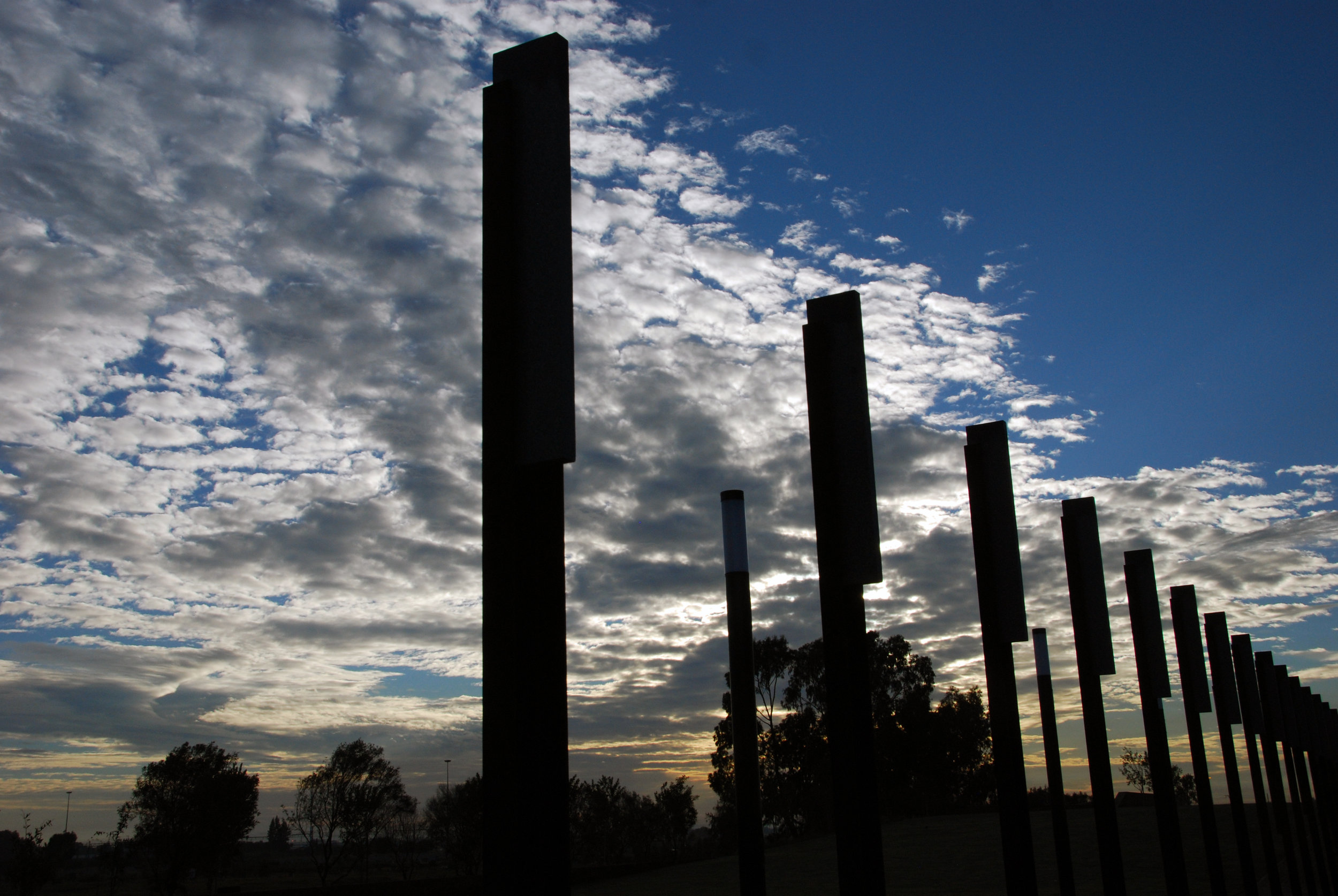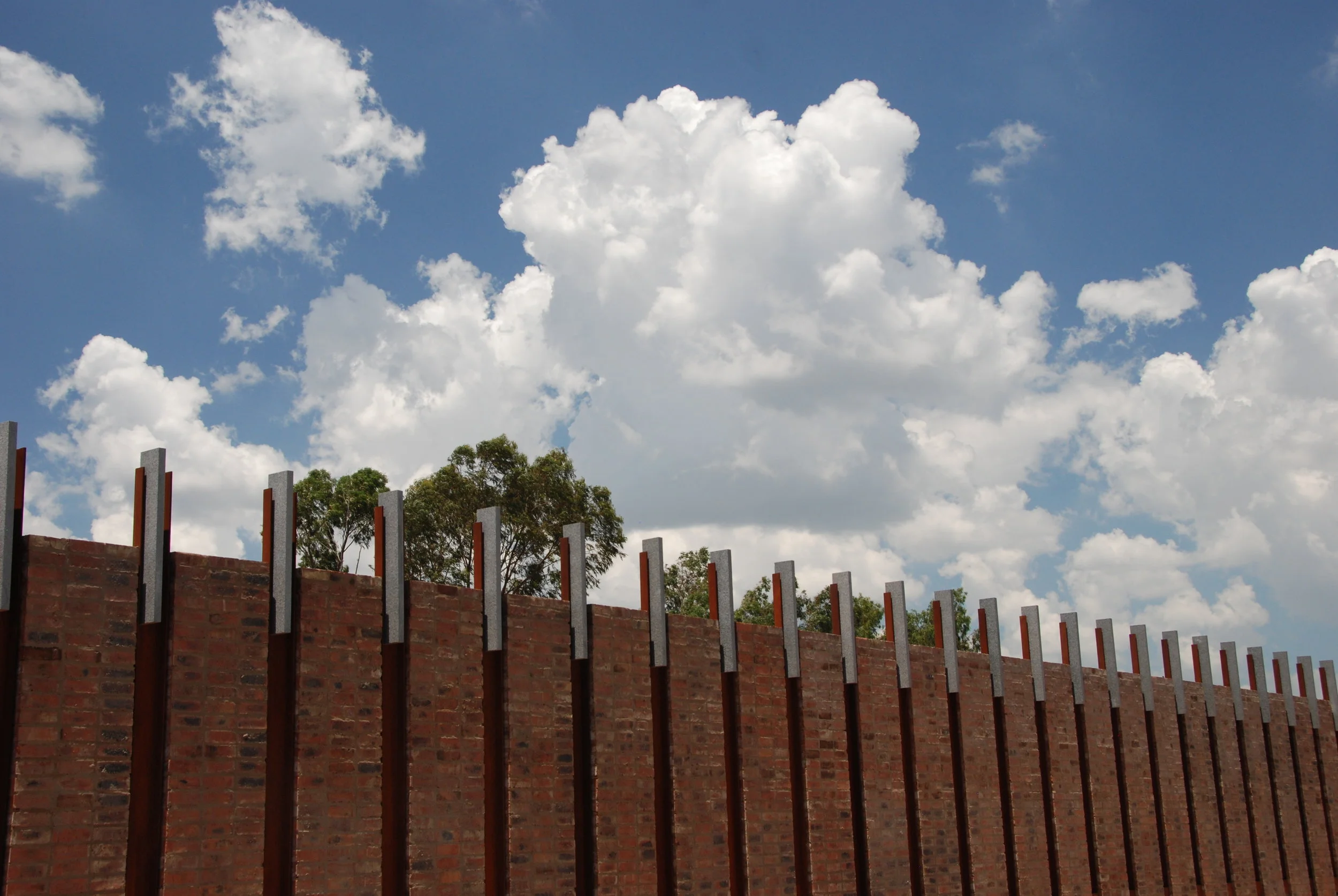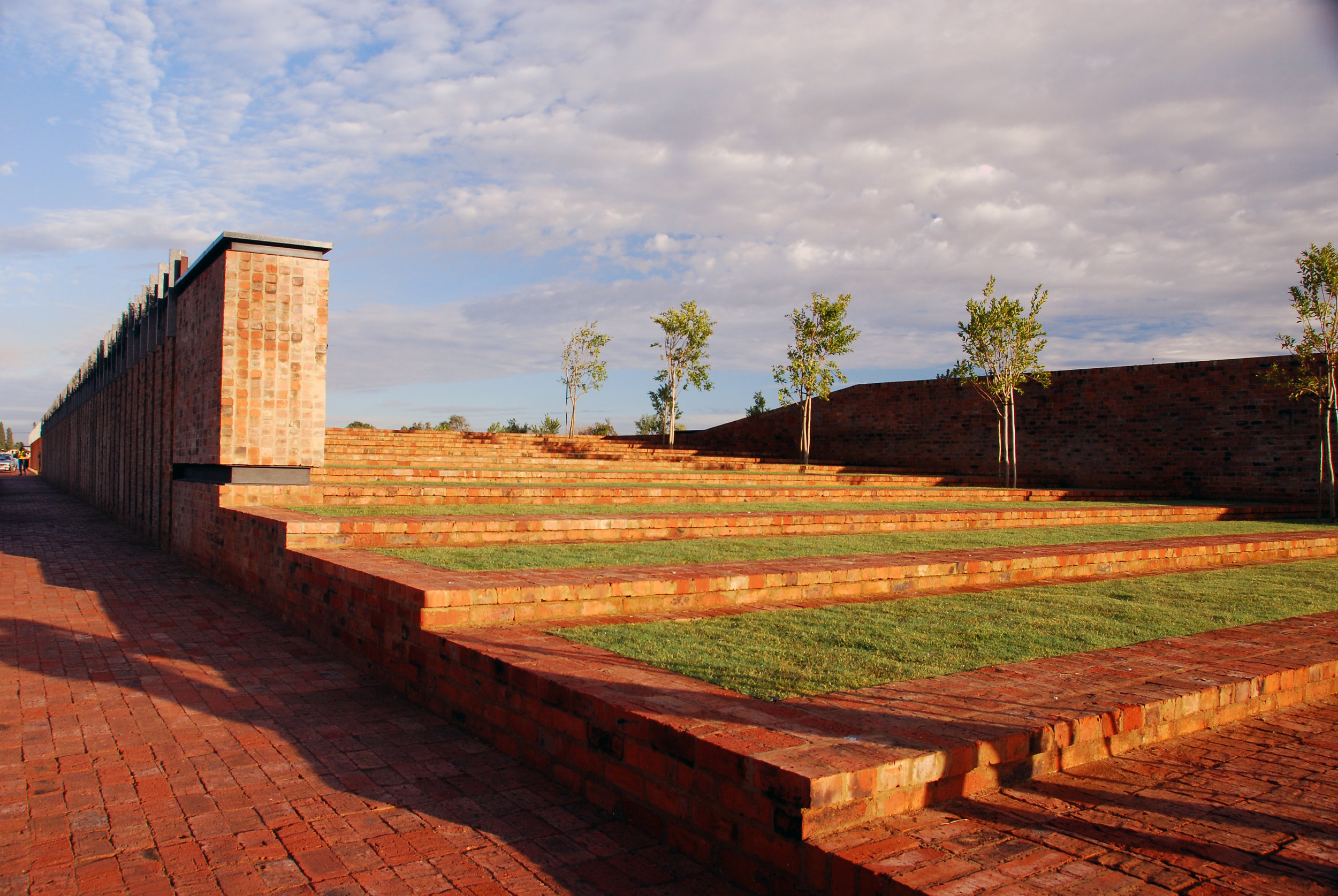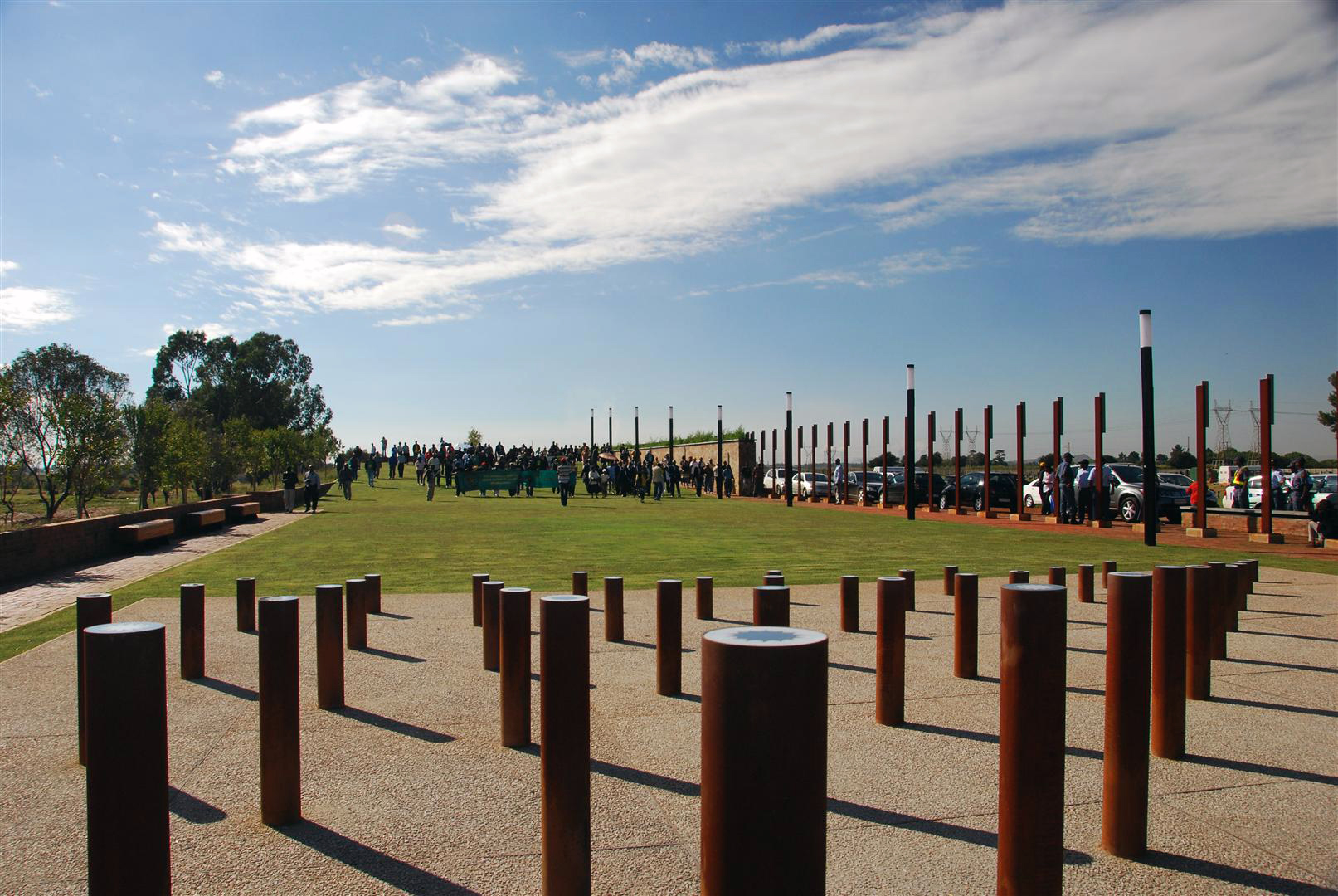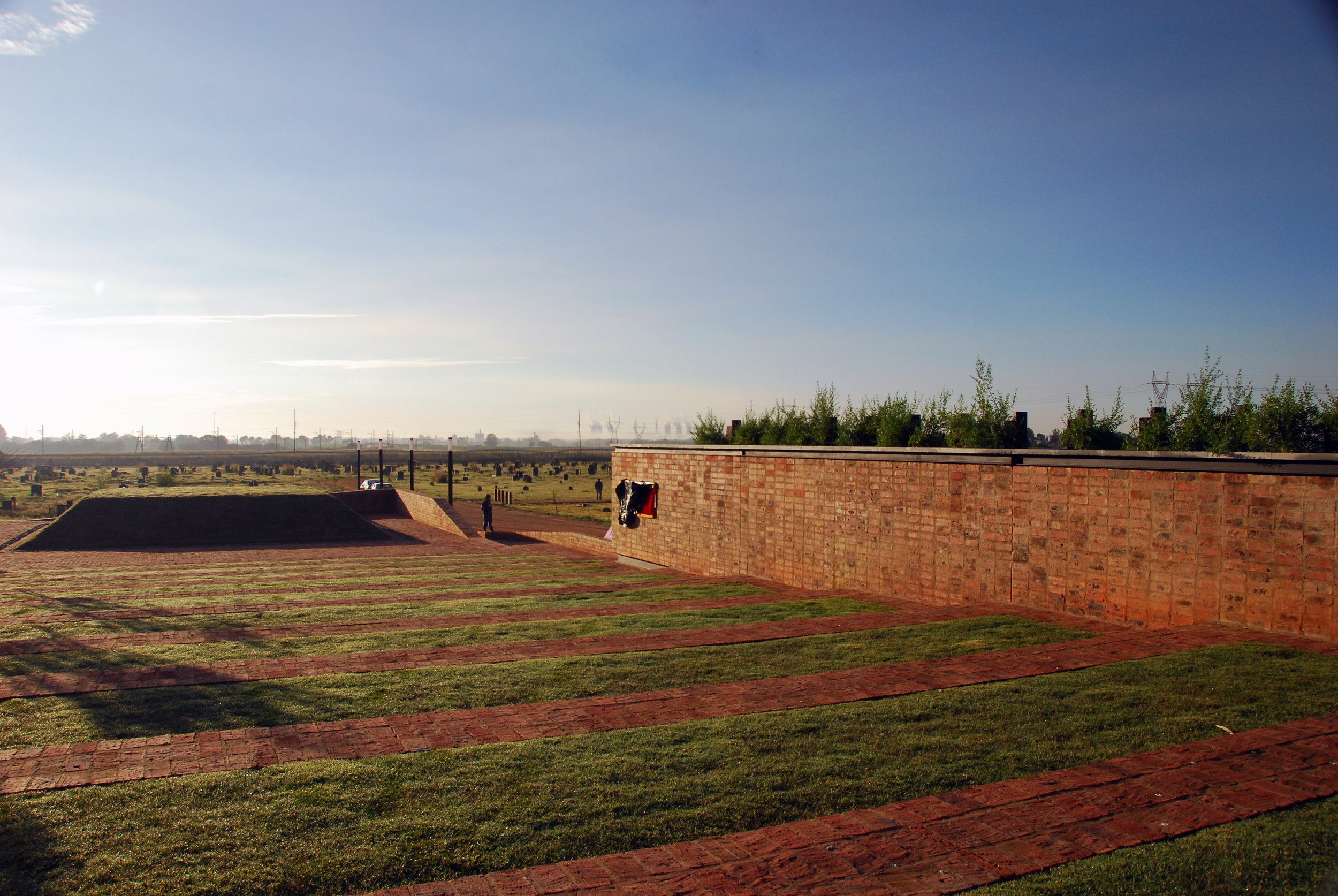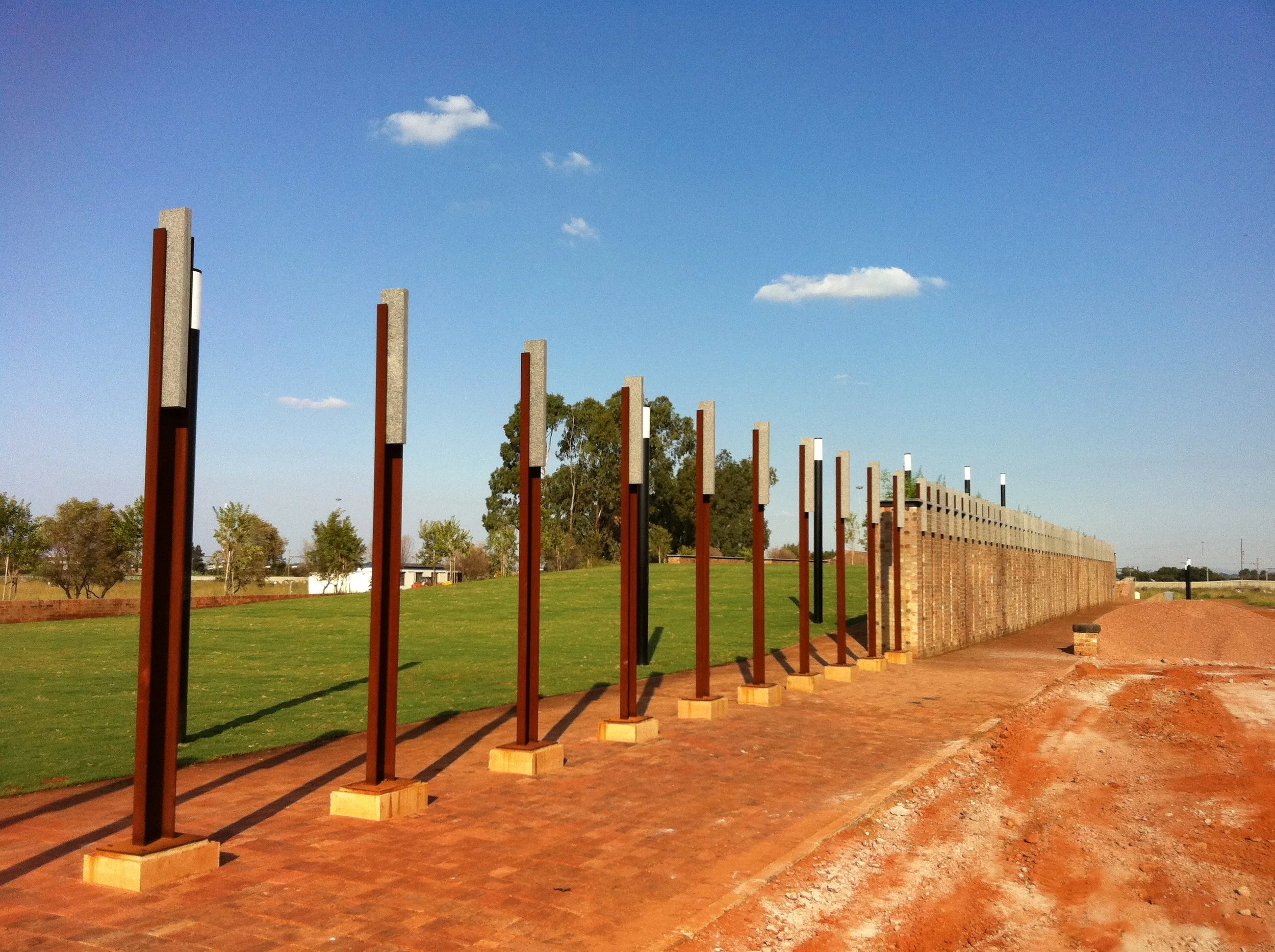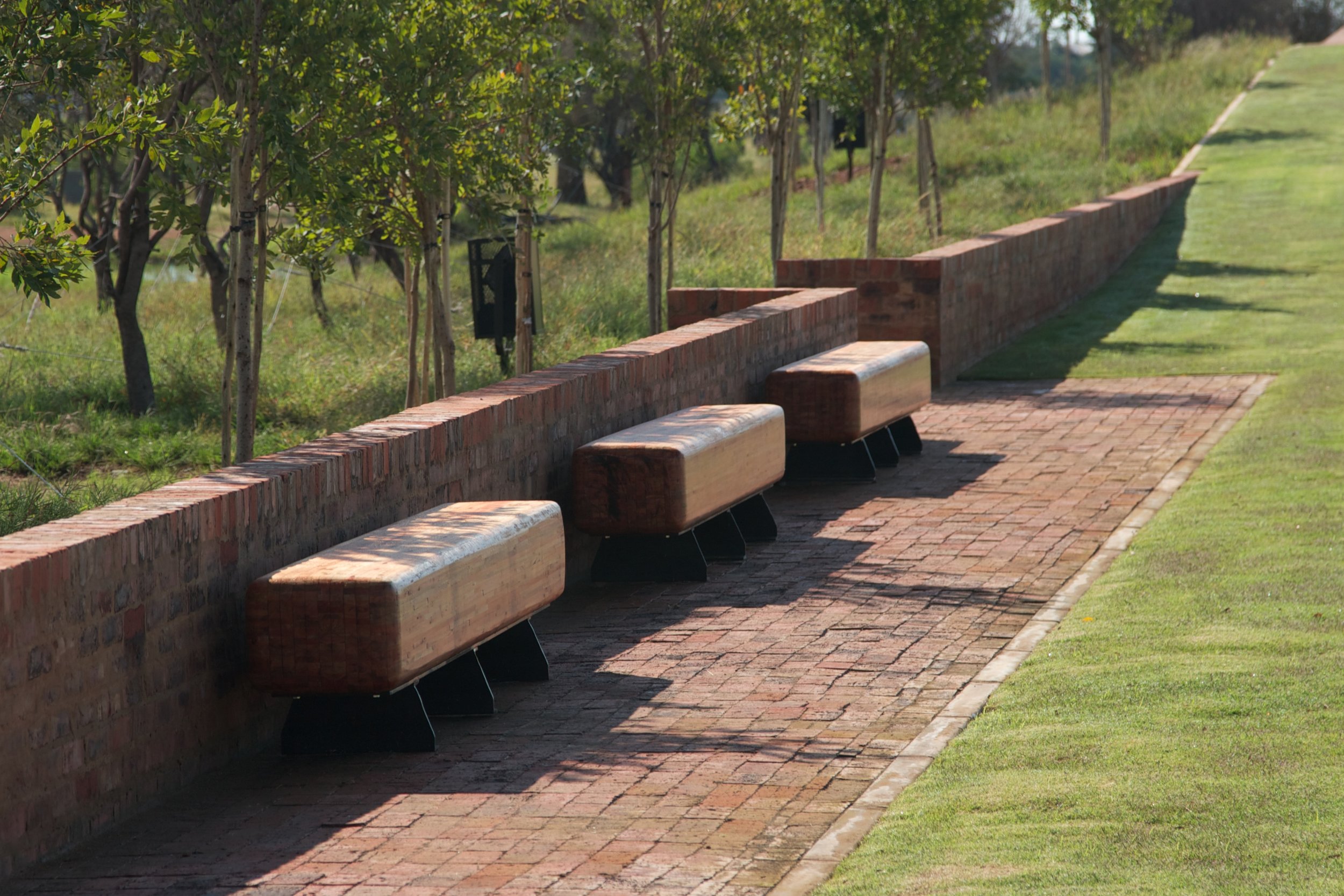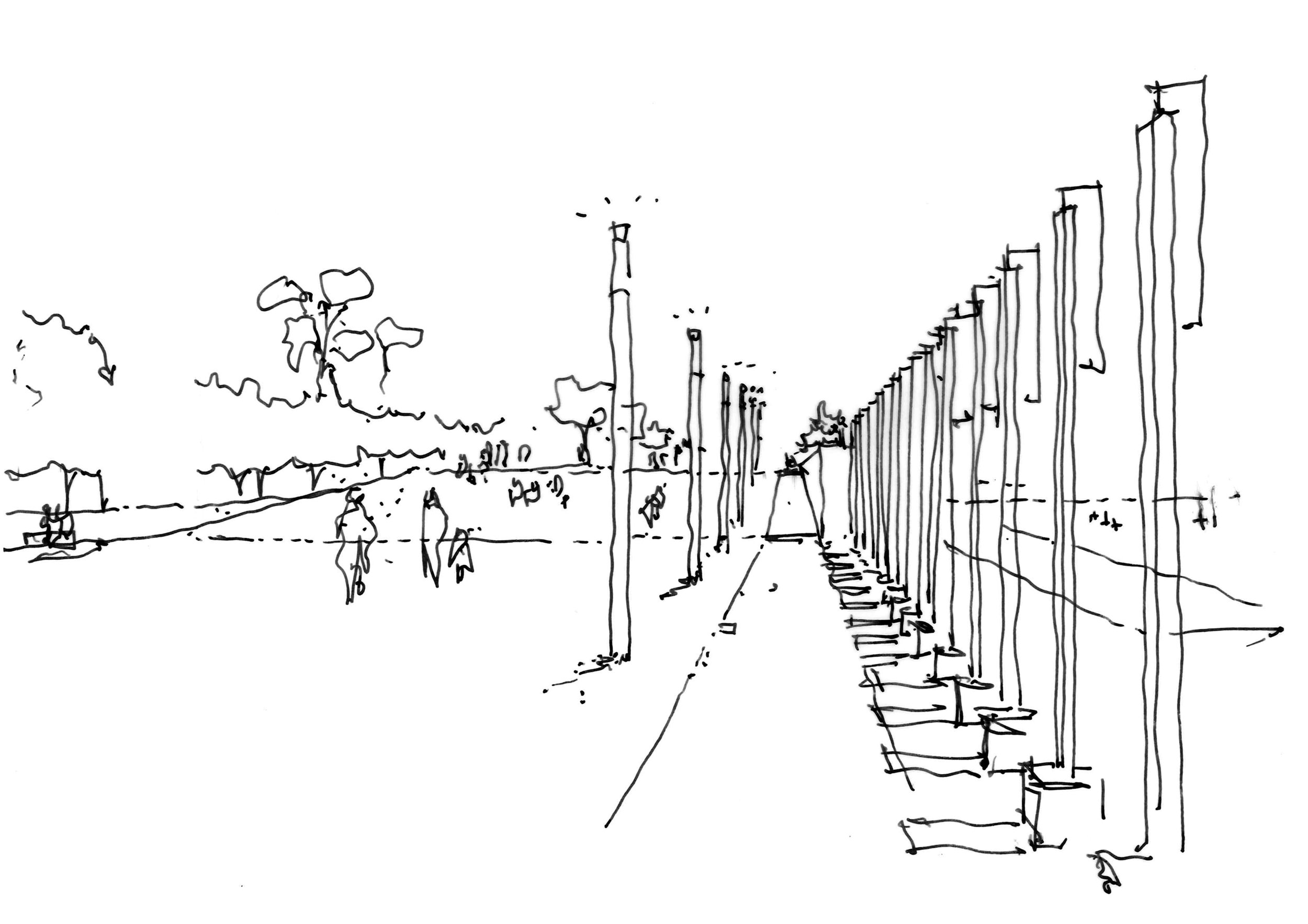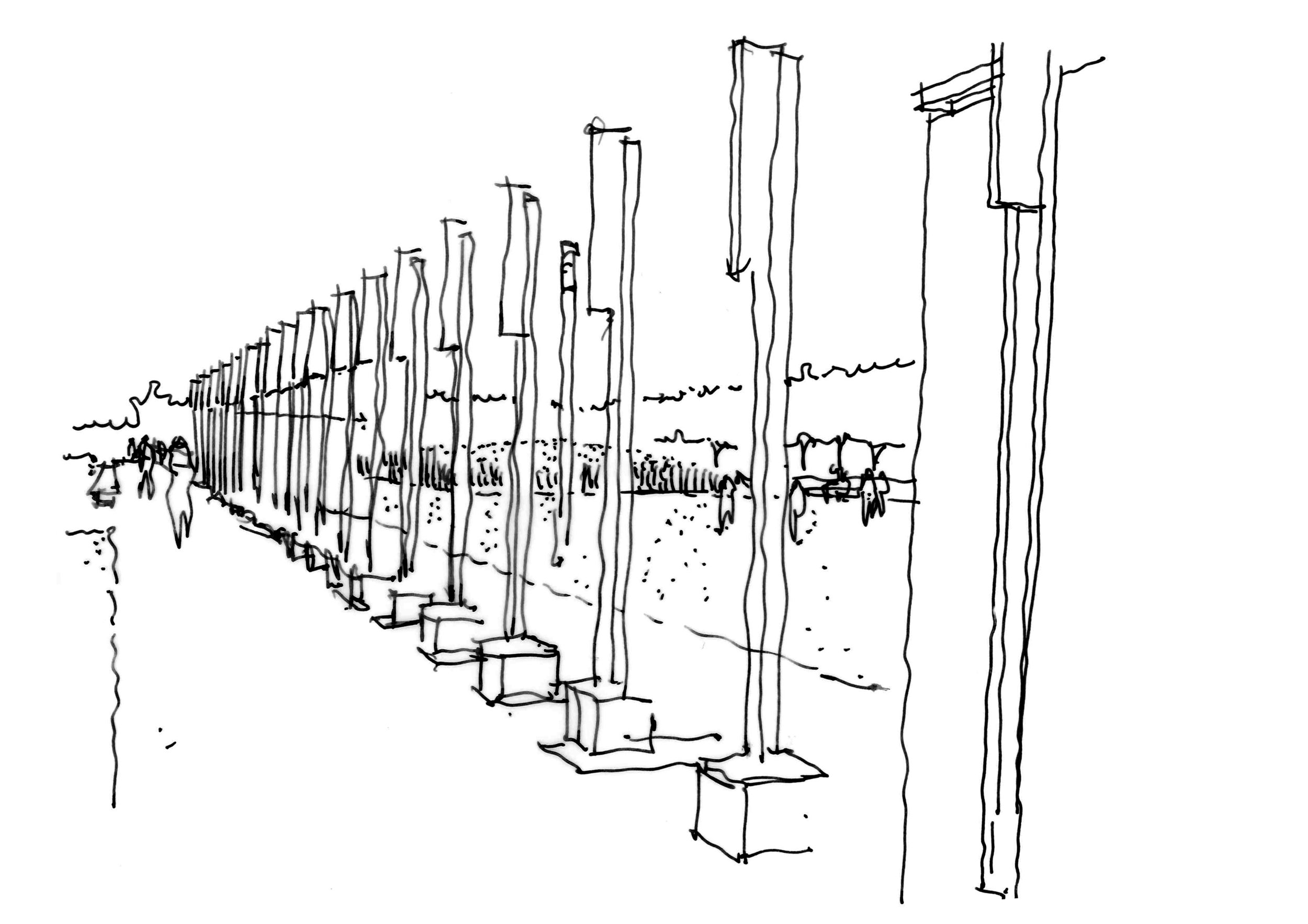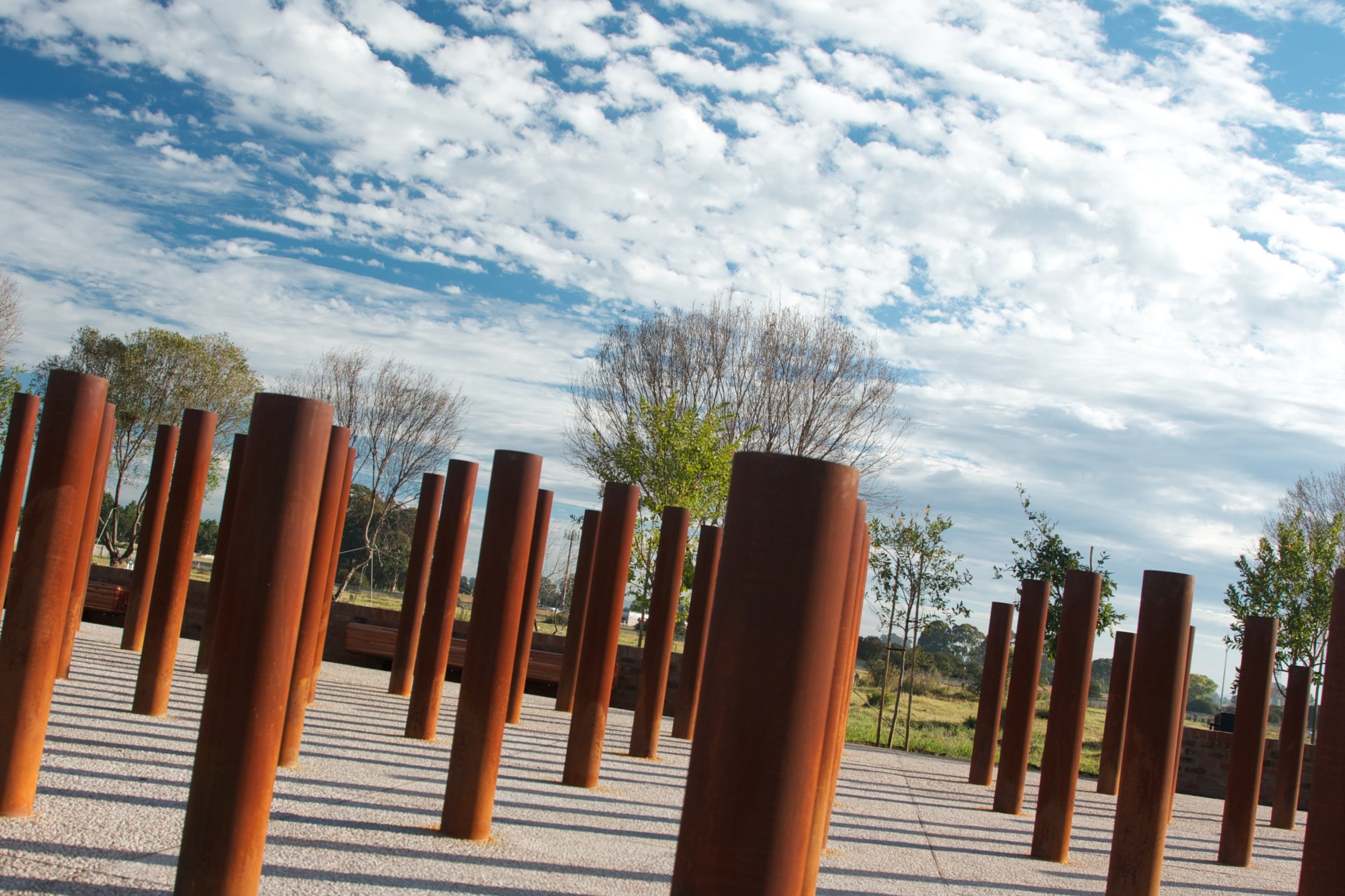
Sharpeville Memorial
Sharpeville, Gauteng, South Africa | 2011
On the 21st of March 1960, the Sharpeville Massacre occurred when the Pan Africanist Congress organised a peaceful protest in which black Africans burnt the pass books which restricted their movements. The event which started out as a peaceful protest soon became violent, when the South African police opened fire on the crowd, killing 69 people. The Sharpeville Massacre increased South Africa’s isolation from the international community and served as a catalyst for the Resistance Movement which led to the fall of Apartheid in 1993.
The Sharpeville Memorial Garden, located in the Pelindaba Cemetery, serves as a place of remembrance for the local community and as a venue for both intimate and large memorial events a – such as the annual gathering on Human Rights Day. The project was conceived as a ‘procession through a garden’ and was informed by the concepts of viewing, gathering and remembrance. The use of views and procession were important design generators in the conceptualisation of the memorial space within the context of the cemetery, and its broader context in the Sharpeville heritage precinct. On arrival, visitors are enticed towards the memorial space along a processional path through the cemetery and past the 69 graves. The landscape architects felt strongly that the memorial garden should first be seen in relation to its setting and placing it at a distance, shifted the emphasis away from the designed space and onto the 69 graves.
The pathway from the 69 graves takes visitors to the eastern edge of the memorial space and then along the length of a Memorial Wall and into the garden around the western end of the wall. There is a sense of anticipation as one passes the Memorial Wall’s skeletal row of raw-steel columns, representing a row of people, as to the future and what may lie ahead. It is only upon entering the garden that the visitors discover the less monumental elements – the large open lawn area, the more intimate amphitheatre and the sculpture installation representing a permanent bouquet of flowers. The ‘bouquet’ by artist Marco Cianfanelli was created by 156 unique vertical raw-steel poles, each finished off with a black and white granite ‘flower head’, akin to those left daily on graves in the cemetery. As a final movement, visitors find their way up the slope behind the memorial wall and onto an elevated viewing platform. It is from this point that they look back across the cemetery towards the 69 graves as a final acknowledgment of the fallen.
ILASA Award of Excellence (2011)
